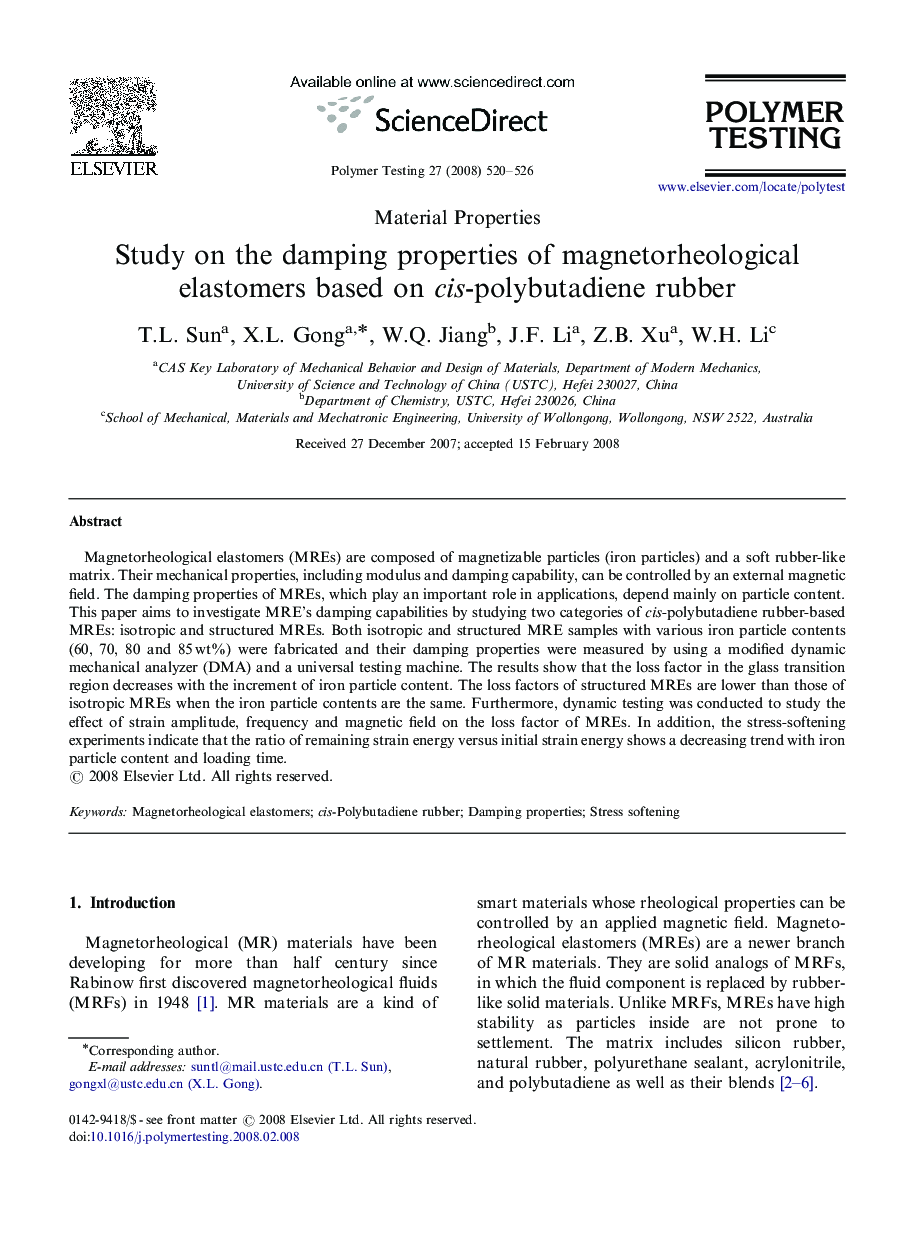| Article ID | Journal | Published Year | Pages | File Type |
|---|---|---|---|---|
| 5207383 | Polymer Testing | 2008 | 7 Pages |
Abstract
Magnetorheological elastomers (MREs) are composed of magnetizable particles (iron particles) and a soft rubber-like matrix. Their mechanical properties, including modulus and damping capability, can be controlled by an external magnetic field. The damping properties of MREs, which play an important role in applications, depend mainly on particle content. This paper aims to investigate MRE's damping capabilities by studying two categories of cis-polybutadiene rubber-based MREs: isotropic and structured MREs. Both isotropic and structured MRE samples with various iron particle contents (60, 70, 80 and 85Â wt%) were fabricated and their damping properties were measured by using a modified dynamic mechanical analyzer (DMA) and a universal testing machine. The results show that the loss factor in the glass transition region decreases with the increment of iron particle content. The loss factors of structured MREs are lower than those of isotropic MREs when the iron particle contents are the same. Furthermore, dynamic testing was conducted to study the effect of strain amplitude, frequency and magnetic field on the loss factor of MREs. In addition, the stress-softening experiments indicate that the ratio of remaining strain energy versus initial strain energy shows a decreasing trend with iron particle content and loading time.
Related Topics
Physical Sciences and Engineering
Chemistry
Organic Chemistry
Authors
T.L. Sun, X.L. Gong, W.Q. Jiang, J.F. Li, Z.B. Xu, W.H. Li,
